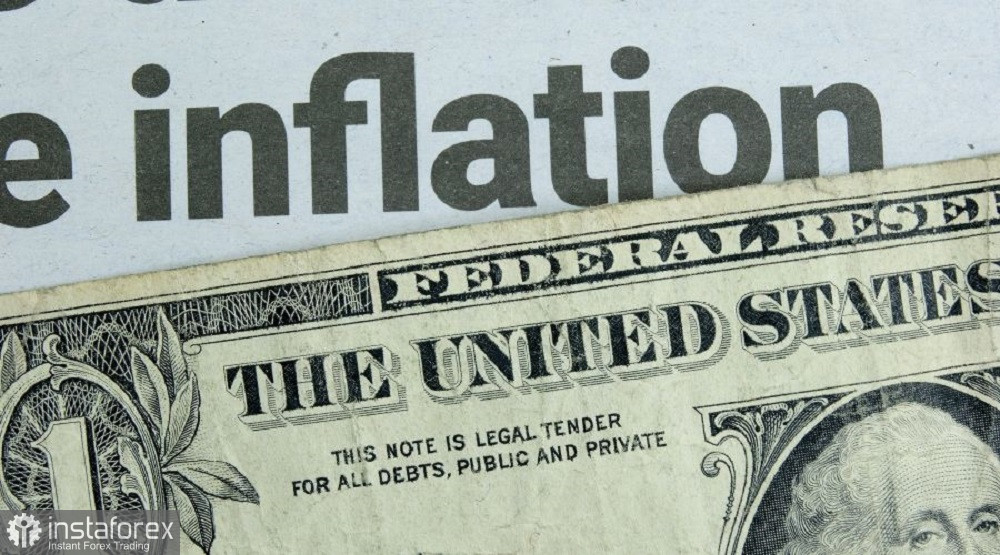In anticipation of the September FOMC meeting, the results of which will be known on Wednesday, the US Dollar Index is holding steady and even trying to breach the 1.05 figure. In other words, the greenback is exhibiting remarkable resilience, even as hawkish expectations regarding the Federal Reserve's future course of actions continue to wane: for instance, the probability of a rate hike at the upcoming meeting has already dropped to 1%, and the likelihood of tapering in November has fallen to 30%. Nevertheless, despite these circumstances, the dollar continues to hold its ground, providing support to EUR/USD bears, who, in turn, have managed to settle in the 1.06 area.

What is the reason for such stress resistance of the US currency? In my opinion, the dollar bulls have found a quite serious ally in the form of oil. Recent developments in the oil market and, especially, the prospects for its growth are having their impact, including on inflation expectations. Brent crude not only remains above the $90 mark (a 10-month high) but also demonstrates an uptrend. WTI crude oil is also trading above $90, at its highest levels since November 2022. Interestingly, oil traders largely ignored the news of the increase in fuel stocks in the United States. Last week, the Energy Information Administration (EIA) reported a 4 million barrel increase in US crude oil inventories. According to the EIA's comments, this was due to an increase in production (by 100,000 barrels per day, to 12.9 million barrels per day) and a rapid rise in net imports (by 2.7 million barrels per day). At the same time, crude oil exports decreased by 1.9 million barrels per day.
Rising oil prices are causing justified concerns about US inflation. It is worth noting that the average cost of regular gasoline in the United States has increased by nearly 8% in the past two months. Diesel fuel prices in the United States have jumped to the highest level for this time of year, surpassing $140.
The increase in gasoline prices has already impacted inflation dynamics: notably, the annual Consumer Price Index has accelerated to 3.7%, exceeding the forecasted 3.6% growth. This indicator has been on an uptrend for the second consecutive month after a 12-month downward cycle. In monthly terms, the CPI has risen to 0.6%, marking the strongest growth rate since June 2022. Gasoline price indexes contributed the most to the monthly increase, accounting for more than half of the rise. The energy index rose by 5.6% in a month, as almost all major energy component indexes increased.
Considering recent events in the oil market, it can be assumed that such trends will continue. According to Bloomberg, there has been a significant increase in the global diesel fuel deficit due to a reduction in oil production. Saudi Arabia and Russia have announced that they will extend oil export cuts until the end of the year, and refineries are struggling to produce enough fuel to meet existing demand. Gasoline prices are rising, thereby triggering a new wave of inflation.
It is worth noting that experts from the International Energy Agency stated in their September report that the situation is not expected to improve by the end of the year because "the potential to increase production lags seriously behind expected demand growth." The IEA specialists expressed concern about the sharp reduction in inventories and a significant deficit in the market. It is reported that last month the deficit amounted to 1.7 million barrels per day, and global inventories fell to 13-month lows.
The current situation in the oil market is playing in favor of the US dollar as it fuels hawkish expectations regarding the Fed's future course of actions (not in September, but possibly in November).
Treasury yields also provided support to the dollar. The yield on 10-year US government bonds reached a 16-year high on Monday (4.34%).
In general, the fundamental background remains favorable for the greenback and, consequently, for EUR/USD bears. The outcome of the September meeting is effectively predetermined, but this fact doesn't deter dollar bulls from holding their positions, including against the euro. The market doesn't expect the Fed to raise interest rates in September, but it keeps in mind the situation with oil, which could act as a "black swan." These concerns are keeping traders from taking long positions on the EUR/USD pair. However, short positions also appear risky as the price is already close to a strong support level at 1.0630 (the lower Bollinger Bands line on the daily chart). Therefore, in the perspective of the next few days (until the announcement of the results of the September meeting), it is advisable to maintain a wait-and-see position on the pair.





















